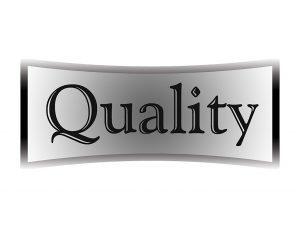
It’s natural for companies to expect immediate return on any investment. The truth is, building a business takes time and patience. Marketing is an essential element to generating business, but unrealistic marketing expectations are common. Setting the bar too high and establishing unrealistic deadlines can result in disappointment and failure. To avoid unrealistic marketing expectations, follow these guidelines to set achievable goals.
Establishing Marketing Expectations

- Understand the role of marketing. It’s important to understand the functions and realities of marketing before creating any plans. Define what “value” looks like to your organization. For example, are you looking to increase sales, build brand awareness, explore new markets or enhance relationships with existing clients? Define metrics for measuring relevant KPIs such as website traffic, engagement, lead generation statistics or email click-throughs. Remember, many facets of marketing cannot be directly measured. For instance, it is difficult to measure the ROI of brand influence, social media outreach, visibility or sales support. In fact, 39% of marketers say proving the ROI of their marketing activities is their top marketing challenge. It’s crucial to set achievable goals with scheduled benchmarks and develop a step-by-step plan. Determine what type of content you will produce. Will you create blogs, white papers, newsletters, email campaigns or videos? Which team members can contribute? Do you have the necessary technology? Be honest about your capabilities to establish practical deliverables and deadlines.
- Recognize quality takes time. Modern society, technology and entertainment support the concept of instant gratification. We’re used to spending money and immediately seeing the return. However, marketing simply doesn’t work that way. Leads require nurturing. Followers and databases require building and continued engagement. Quality content takes time to create, time to distribute and time to gain traction. For example, one in 10 blog posts are compounding, meaning organic search increases their traffic over time. Maintain realistic expectations by establishing a timeline for content creation, publishing and distribution. Frequency and consistency of thought leadership are vital to engaging prospects and clients. Create a schedule that maximizes the sweet spot. A good timetable allows for regular publishing without sacrificing quality of content.
- Harness flexibility and adaptability. It’s not enough to implement a new marketing initiative and let it run its course. Instead, evaluate progress as it happens. Who makes up your audience? What is your audience reacting strongest to? What are they exiting out of? Which distribution methods are working best? Identify what has succeeded and what hasn’t, and then adjust accordingly. Make adaptability a requirement. Understand that some ideas may not work, and unexpected opportunities may present themselves. Allow for the unforeseen. Utilize different metrics and industry knowledge to anticipate change. Maintain open communication with your clients and prospects to best understand their changing needs and interests.
Success Over the Long Haul

It’s commonly said business is a marathon, not a sprint. Understanding realities of business and exercising patience are key elements of success. Setting realistic marketing expectations helps you weather inevitable storms and setbacks. Be proactive. Keep a steady stride and let progress happen at its own pace. Successes may start small, but each triumph contributes to achieving the big picture.
